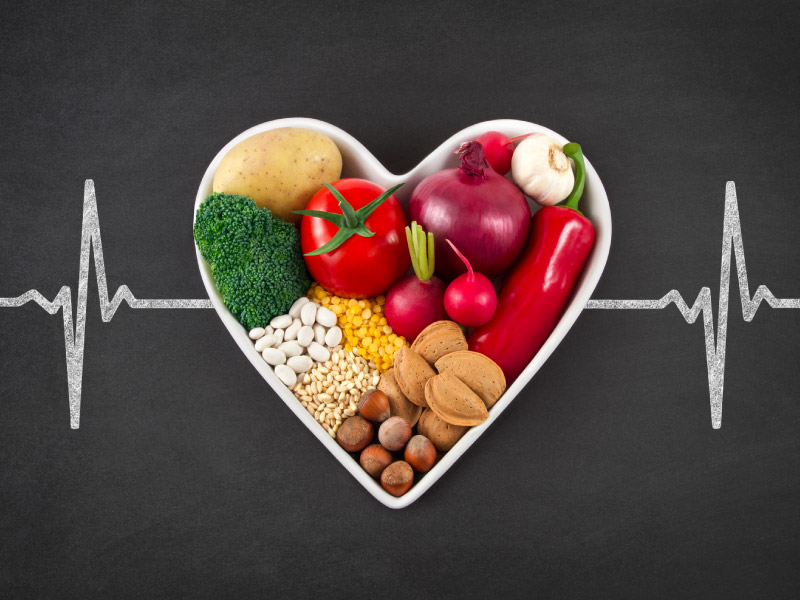
The latest word on heart-healthy eating is “balance.” A new report encourages people to think of broad eating habits instead of narrowly focusing on single foods. Rather than one-size-fits-all rules, it leaves room for personal preferences.
“The emphasis is on dietary patterns, not specific foods or nutrients,” said Alice H. Lichtenstein, who led the writing committee for the American Heart Association scientific statement. “And it’s not just about what people shouldn’t be eating. The focus is really on what people should be eating, so they can customize it to their personal preferences and lifestyles.”
The guidance, last updated in 2006, was published Tuesday in the AHA journal Circulation. The advice is consistent with federal dietary guidelines but emphasizes the latest research on reducing the risk of heart disease.
The report seeks to dispel the idea that a heart-healthy diet is about adding one vegetable or vitamin, said Lichtenstein, Gershoff Professor of Nutrition Science and Policy and director of the Cardiovascular Nutrition Laboratory at Tufts University in Boston. Instead, it emphasizes the importance of “the whole package” of what someone eats over the course of a day or week.
“If we increase our intake of one thing in our diets, we tend to decrease our intake of something else,” she said. “And both the increase in one dietary component and decrease in another dietary component can have independent effects. What’s really important is the balance of everything together that has the biggest impact on cardiovascular health.”
A heart-healthy dietary pattern, the report advises, includes:
– achieving and maintaining a healthy body weight.
– eating a variety of fruits and vegetables.
– choosing whole grains rather than refined grain products.
– choosing healthy sources of proteins, mostly from plant sources (legumes and nuts); regularly eating fish and seafood; substituting nonfat and low-fat dairy products in place of full-fat versions; and for people who eat meat, choosing lean cuts rather than processed forms.
– using liquid plant oils instead of tropical oils (coconut, palm and palm kernel) and animal fats (lard and butter) or partially hydrogenated fats.
– choosing minimally processed over ultra-processed foods.
– minimizing foods and beverages with added sugar.
– choosing foods with little or no added salt.
– limiting alcohol, if you already consume it, and not starting if you don’t.
– adhering to the guidance regardless of where food is prepared or consumed.
Instead of offering calorie counts, the guidance acknowledges that everyone’s needs vary, Lichtenstein said. During adulthood, for example, energy needs decrease with every decade. “If you are physically active, you have a little more flexibility in terms of what you eat.”
And when balancing how much and what you eat, said report co-author Maya Vadiveloo, “the goal is to make sure all of those calories count and that you’re consuming nutrient-dense foods.”
Americans’ eating habits have changed, said Vadiveloo, an assistant professor in the department of nutrition and food sciences at the University of Rhode Island in Kingston. “Decades ago, people would eat out, and it would be a treat.” People might have set aside thinking about their health.
Now, people can choose from meal delivery kits and prepared foods at grocery stores as well as fast-food, fast-casual and sit-down restaurants, she said. “It’s much more of a regular part of almost every person’s dietary pattern.” And people need to think about what they’re eating no matter where they are.
But heart-healthy eating habits shouldn’t be seen as punitive, Lichtenstein said.
“You can eat what you enjoy,” she said. But sometimes, you just have to choose “a little more carefully, consider frequency and adjust serving sizes.”
The new guidance emphasizes the importance of incorporating food and nutrition education into schools, starting at an early age, Lichtenstein said. “This will ensure children have the basic facts and can draw on these as they develop into independent adults, making their own choices.”
The statement also acknowledges misinformation and the systemic problems – such as racism, neighborhood segregation, food insecurity and targeted marketing – that can be barriers to adhering to heart-healthy eating patterns. The report called it a “public health imperative” to work on policies that remove these barriers.
Meanwhile progress can happen individually, one small step at a time.
For example, Lichtenstein said, someone who regularly eats presweetened full-fat yogurt can identify fat-free or low-fat varieties containing less sugar. Someone who regularly eats crackers can shift to varieties made with whole grains and less sodium. Or someone might halve their portions of pasta or white rice at a meal and add an extra serving of vegetables.
Vadiveloo also suggested simple substitutions – such as replacing white sandwich bread with whole wheat. “Maybe one meal a week you’re using beans for your protein source, or maybe one time you’re switching a processed meat for fish.”
What you choose to eat is only one part of heart health, Lichtenstein said. Just keep in mind, “it’s not all of one thing and none of another. It’s the balance among your choices in terms of diet and, ultimately, lifestyle.”
If you have questions or comments about this story, please email editor@heart.org.







